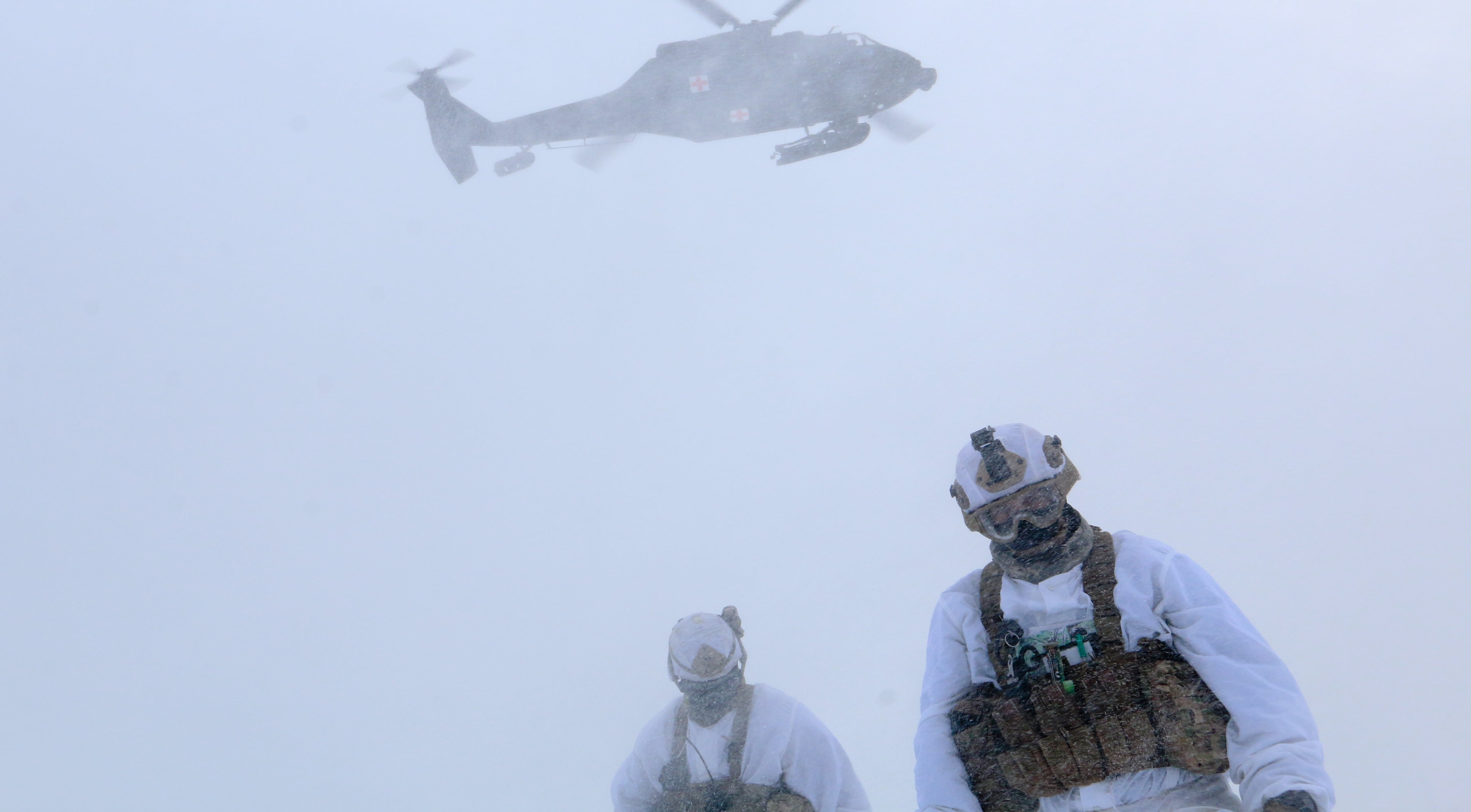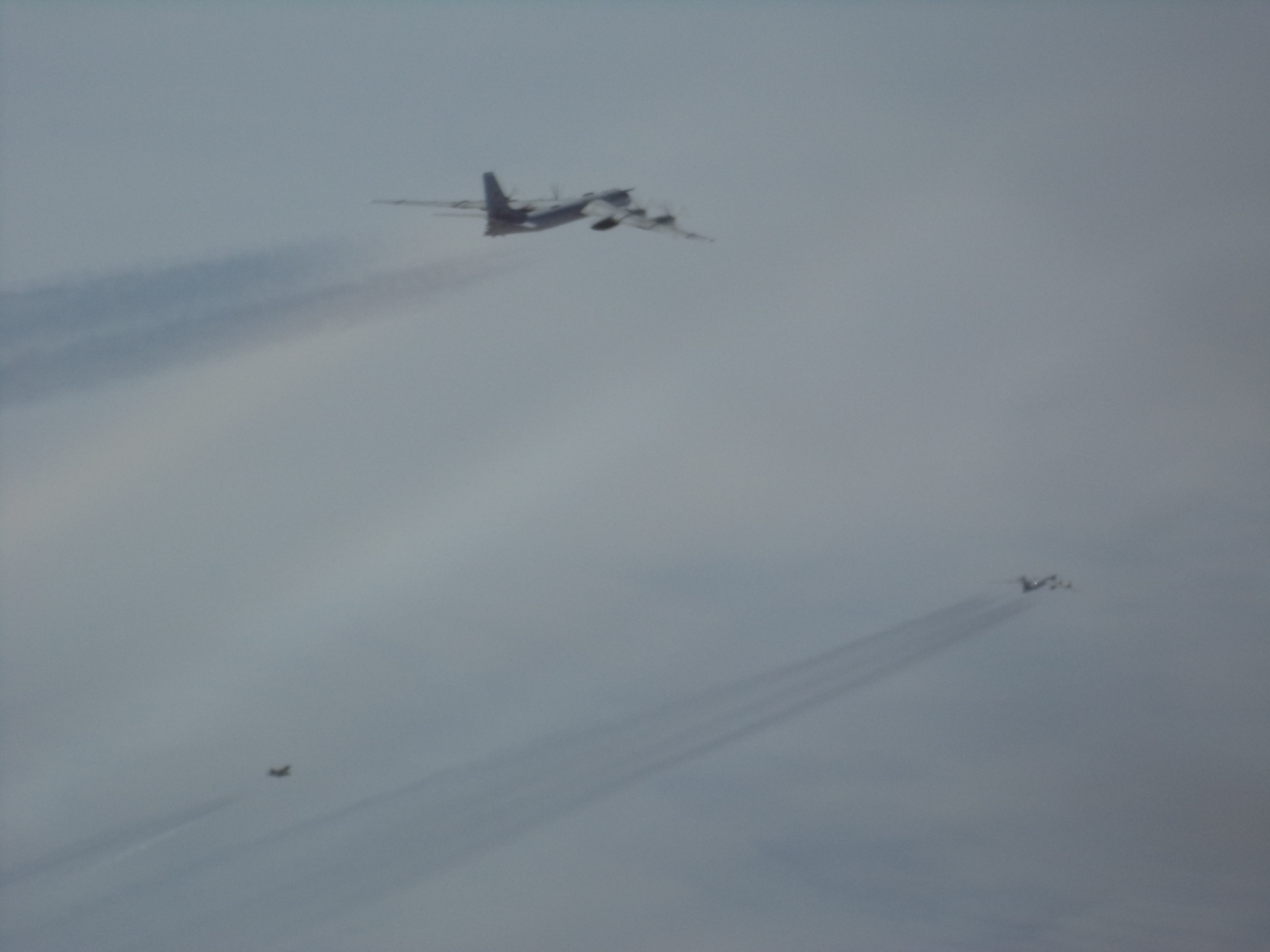U.S. Air Force F-22 Raptors intercepted Russian fighter and bomber aircraft near Alaska on Monday, officials with North American Aerospace Defense Command said Tuesday.
There were two groups of Russian aircraft that entered the Air Defense Identification Zone, or ADIZ, a NORAD official told Air Force Times.
“One group penetrated the ADIZ north and proceeded south, the other penetrated south and proceeded north. The intercept concluded at approximately 2100-2400 mountain time," the official said.
Two Russian Tupolev Tu-95 bombers were intercepted by two F-22s. A second group of two more Tu-95s and two Sukhoi Su-35 fighter jets were intercepted later by two more F-22s.
An E-3 Sentry airborne early warning and control aircraft provided overall surveillance during the intercepts, NORAD said.
The Russian aircraft remained in international airspace during the encounter, though they did enter the Alaskan Air Defense Identification Zone, which extends approximately 200 miles west off Alaska’s coast.
An ADIZ requires aircraft to identify themselves to civil and military air traffic controllers due to national security concerns.
NORAD also posted a series of pictures from the encounter, which are relatively normal in the region. For instance, NORAD intercepted two Russian Tu-160 Blackjack strategic bombers in January, and U.S. aircraft patrolling in Eastern Europe are frequently intercepted by Russian jets.
RELATED

The pictures posted by NORAD also appear to show the F-22s with external fuel tanks, which would increase the radar signature on what is normally a stealthy, fifth-generation aircraft. That appendage helps to increase the F-22′s time in flight and can help Russian aircraft spot the fighter jet, which isn’t always a bad thing.
During intercept missions, U.S. aircraft aren’t necessarily attempting to sneak up on an aircraft, but instead are focusing on escorting the adversary safely and professionally.
The NORAD official would not comment on the radar disposition of the F-22s: “We do not disclose tactical details such as that due to operational security reasons,” they said.
Air Force Gen. Terrence O’Shaughnessy, who leads NORAD and U.S. Northern Command, has warned in the past year that the “homeland is no longer a sanctuary," due to the increasing missile and air force capabilities of peer adversaries.

“We’re in a changing security environment,” O’Shaughnessy said over the summer. “We used to think about the sanctuary we had with oceans and friendly countries to our north and south, but that’s changing with adversaries that are actually able to reach out and touch us now.”
NORAD uses a layered defense network of radars, satellites and fighter jets to identify approaching aircraft and determine an appropriate level of response.
The identification and monitoring of aircraft entering a U.S. or Canadian ADIZ demonstrates how NORAD executes its aerospace warning and aerospace control missions for the United States and Canada, the command said in a press release.
The use of F-22s for homeland defense missions like this intercept has come under scrutiny in the past. The Air Force’s fleet of roughly 180 F-22s are an integral part of the U.S. military strategy to defeat high-end adversaries, but using the aircraft for alert missions saps them from their primary training goals.
“Operational squadrons in Alaska and Hawaii have F-22 pilots sitting alert in order to address the 24-hour per day alert commitment,” a Government Accountability Office study from July said, noting the massive time consumption required of the alert mission. “With no other operational Air Force fighter squadrons currently based in Hawaii and Alaska, the alert mission falls to the F-22 units.”
Kyle Rempfer was an editor and reporter who has covered combat operations, criminal cases, foreign military assistance and training accidents. Before entering journalism, Kyle served in U.S. Air Force Special Tactics and deployed in 2014 to Paktika Province, Afghanistan, and Baghdad, Iraq.




